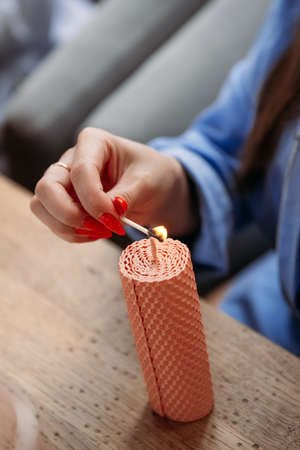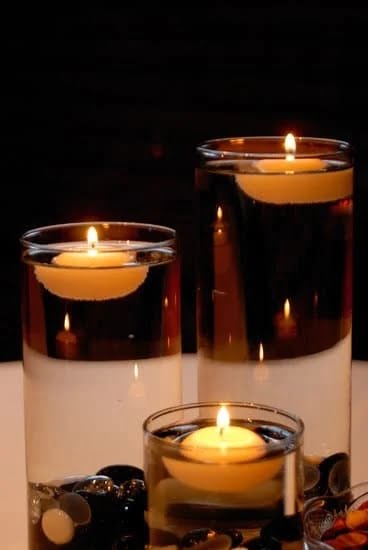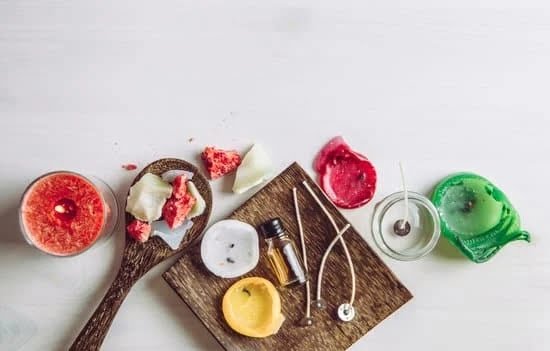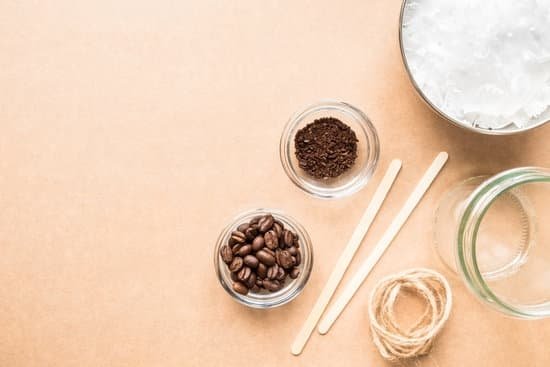What essential oils can you use in candle making? Essential oils play a crucial role in the creation of aromatic and therapeutic candles. Understanding their purpose and benefits is essential for a successful candle-making process.
In this article, we will explore popular essential oils used in candle making, factors to consider when choosing the right essential oils, blending techniques for custom scents, dos and don’ts of using essential oils in candles, extraction methods for DIY projects, enhancing candle-making techniques with essential oils, and resources for high-quality essential oils.
Whether you are a beginner or an experienced candle maker, incorporating essential oils can elevate your candle-making experience and create unique fragrances that cater to your preferences and needs.
Let’s delve into the world of essential oils and their role in candle making.
Popular Essential Oils for Candle Making
When it comes to creating handmade candles, essential oils can add a personalized touch and delightful aromas. Whether you’re looking to promote relaxation, invigorate the senses, or simply enhance the ambiance of a room, choosing the right essential oils is crucial. Here are some popular essential oils commonly used in candle making:
- Lavender: Known for its calming and soothing properties, lavender essential oil is a popular choice for creating candles designed to promote relaxation and stress relief.
- Eucalyptus: With its refreshing and invigorating scent, eucalyptus essential oil is often used in candles intended to clear the mind and support respiratory health.
- Citrus: Essential oils such as lemon, orange, and grapefruit can add a bright and uplifting aroma to candles, perfect for creating an energizing atmosphere.
- Vanilla: Renowned for its sweet and comforting fragrance, vanilla essential oil is a popular choice for adding warmth and sweetness to candle formulations.
- Peppermint: Known for its refreshing and minty scent, peppermint essential oil is often included in candles for promoting alertness and mental clarity.
These essential oils not only provide delightful fragrances but also offer various aromatherapy benefits. When choosing which essential oils to use in candle making, consider the desired effect or mood you want to achieve with your finished product. Experimenting with different combinations of these popular essential oils can result in unique and customized scents that cater to your specific preferences.
In addition to the options mentioned above, there is a wide range of other essential oils that can be utilized in candle making. It’s important to choose high-quality essential oils from reputable suppliers to ensure the best results in your candle-making endeavors. By carefully selecting the right combination of essential oils, you can elevate your candle-making experience and create aromatic masterpieces that enhance any environment.
Factors to Consider When Choosing Essential Oils
When it comes to choosing essential oils for candle making, several factors need to be considered to ensure the success of your project. The first consideration is the scent strength of the essential oil. Some essential oils, like lavender and peppermint, are known for their strong scents, while others, such as citrus oils, have a more subtle aroma. It’s important to assess the intended use of the candles and choose essential oils with appropriate scent strength accordingly.
Another crucial factor to consider is the compatibility of the essential oil with the wax used in candle making. Certain waxes may not blend well with specific essential oils, resulting in poor scent throw or even causing the candle to burn improperly. For instance, soy wax generally pairs well with a wide variety of essential oils due to its neutral odor and clean-burning properties.
Additionally, heat resistance is an essential factor when choosing essential oils for candle making. Some essential oils are more sensitive to heat than others and can lose their fragrance when exposed to high temperatures during the candle-burning process. It is therefore important to select heat-resistant essential oils that will maintain their aromatic qualities throughout the life of the candle.
These important factors play a significant role in determining which essential oils are most suitable for use in candle making projects. By carefully considering scent strength, compatibility with wax, and heat resistance, crafters can create exceptional candles that deliver delightful fragrances and therapeutic benefits.
| Factor | Consideration |
|---|---|
| Scent Strength | Assess intended use and choose appropriate scent strength |
| Compatibility with Wax | Select compatible oils with wax for optimal blending and burning |
| Heat Resistance | Select heat-resistant oils that maintain fragrance over time |
Blending Essential Oils for Custom Scents
Tips for Blending Essential Oils
When blending essential oils for custom candle scents, it’s important to start with a clear vision of the desired fragrance profile. Consider the purpose of the candle and the atmosphere you want to create. For example, if you’re aiming for a relaxing scent, you might blend lavender, chamomile, and bergamot essential oils. On the other hand, if you want an energizing scent for a workspace, consider combining peppermint, rosemary, and lemon essential oils.
Suggested Essential Oil Blends
There are numerous combinations of essential oils that can be used to create specific scents for different purposes. For relaxation and stress relief, try blending lavender, ylang-ylang, and cedarwood essential oils. If you’re looking to promote mental clarity and focus, consider mixing rosemary, lemon, and frankincense essential oils. Experimenting with various combinations will allow you to discover your favorite blends for custom candle scents.
Customizing Aromatherapy Benefits
In addition to creating unique fragrances, blending essential oils also allows you to customize the aromatherapy benefits of your candles. Whether you want to promote relaxation, boost energy levels, or enhance mental clarity, selecting specific essential oil blends can help achieve those desired effects in your candles. Understanding the properties of each essential oil is crucial in achieving the desired aromatherapy benefits in your custom candle scents.
Essential Oil Dos and Don’ts in Candle Making
When it comes to using essential oils in candle making, there are certain dos and don’ts that should be considered to ensure a successful and safe process. It’s important to understand the proper usage of essential oils to achieve the desired scent and avoid potential pitfalls. Here, we’ll explore some essential dos and don’ts when incorporating essential oils into your candle-making projects.
Dos of Using Essential Oils in Candle Making
When using essential oils in candle making, it’s important to start with high-quality, pure essential oils. Look for reputable suppliers and brands that offer 100% pure essential oils to ensure the best results in your candles. Additionally, consider the scent strength of each essential oil and experiment with different dilution ratios to achieve the perfect aroma without overpowering the candle.
Don’ts of Using Essential Oils in Candle Making
One common mistake when using essential oils in candle making is adding them directly to hot wax, which can cause the oils to evaporate quickly and result in a weaker scent throw. Instead, it’s recommended to add the essential oils when the wax has cooled slightly but is still liquid enough to mix thoroughly. Additionally, avoid using synthetic fragrance oils or low-quality essential oils while making candles as they may not produce the desired aromatherapy benefits.
Understanding these dos and don’ts of using essential oils in candle making can help you create beautiful, aromatic candles with long-lasting scents. By following these guidelines, you can elevate your candle-making experience and enjoy the therapeutic benefits of natural essential oils.
Essential Oil Extraction Methods for DIY Candle Making
Essential oils are a key ingredient in creating beautifully scented candles with therapeutic benefits. When it comes to DIY candle making, there are various methods for extracting essential oils from natural sources to use in your creations. Understanding these extraction methods allows you to harness the purest and most fragrant essential oils for your candles.
One common method of essential oil extraction is steam distillation, which involves using steam to extract the aromatic compounds from plant material. This process is ideal for obtaining essential oils from botanicals like lavender, rosemary, and mint.
Another method is cold-pressing, commonly used for citrus fruits like lemons and oranges to retain their fresh and zesty aromas. Infusion is also a popular technique for extracting essential oils by steeping plant material in carrier oils, such as jojoba or coconut oil.
Each extraction method yields different types of essential oils with unique characteristics and scent profiles. When selecting the right extraction method for DIY candle making, it’s important to consider the specific aromas you want to achieve and the properties of the plants or fruits being used.
| Extraction Method | Example Essential Oils |
|---|---|
| Steam Distillation | Lavender, Rosemary |
| Cold-Pressing | Lemon, Orange |
| Infusion | Chamomile, Vanilla |
Enhancing Candle-Making Techniques With Essential Oils
When it comes to elevating your candle-making experience, essential oils play a crucial role in not only adding fragrance but also creating a personalized and unique aroma. Here are some tips for incorporating essential oils into different candle-making techniques:
- Hand-Pouring: When hand-pouring candles, you can add essential oils directly to the melted wax before pouring it into the containers. This allows for even distribution of the fragrance throughout the candle.
- Layering: For layered candles, consider using different essential oil blends for each layer to create a multi-dimensional aroma. This technique is perfect for creating visually appealing and aromatic candles.
- Adding Botanical Elements: Enhance the aesthetic and fragrance of your candles by adding dried flowers, herbs, or citrus peels infused with essential oils. This not only adds visual interest but also releases a natural and captivating scent when the candle is lit.
By incorporating these techniques, crafters can experiment with different combinations of essential oils to create candles that not only look beautiful but also fill the room with delightful scents. Remember to consider factors such as heat resistance and compatibility with wax when choosing which essential oils to use in each technique. Now that you know what essential oils can you use in candle making, let your creativity flow and enjoy the process of making personalized and aromatic candles.
Resources for High-Quality Essential Oils for Candle Making
When it comes to candle making, the choice of essential oils plays a significant role in determining the quality and aroma of the final product. The right essential oils can elevate your candle-making experience and create personalized, aromatic candles that offer therapeutic benefits as well. But with so many options available, it’s important to know what essential oils can you use in candle making and where to find high-quality options.
The market offers a wide range of essential oils suitable for candle making, including popular choices like lavender, eucalyptus, citrus, vanilla, and more. These essential oils not only contribute to the scent of the candles but also provide potential aromatherapy benefits when used. It is crucial to choose high-quality essential oils that are pure and free from synthetic additives for the best results.
To ensure the quality of your essential oils for candle making, it is advisable to source them from reputable suppliers and brands. Look for suppliers that specialize in providing pure and natural essential oils specifically designed for use in candles.
Additionally, consider factors such as extraction methods, sourcing practices, and customer reviews when selecting a supplier to ensure you are getting the best quality essential oils for your candle-making projects. Whether you prefer purchasing essential oils online or at a local store, prioritize quality over quantity when choosing essential oils for your candle-making endeavors.
Conclusion
In conclusion, essential oils play a significant role in the art of candle making, offering not only delightful aromas but also therapeutic benefits. The right selection of essential oils can enhance the overall candle-making experience and create personalized, aromatic candles that cater to individual preferences. From popular choices like lavender and eucalyptus to the sweet scent of vanilla or the uplifting citrus fragrances, the options for essential oils in candle making are abundant.
When considering what essential oils to use in candle making, it is important to take into account factors such as scent strength, compatibility with wax, and heat resistance. These considerations will ensure that the chosen essential oils effectively blend with the wax and produce a desirable aroma when the candle is lit. Additionally, exploring different extraction methods for obtaining high-quality essential oils at home can add a sense of creativity and resourcefulness to the candle-making process.
Ultimately, experimenting with different essential oil blends and techniques can elevate one’s candle-making experience, allowing for custom scents that cater to specific moods or occasions. By understanding how to properly incorporate and blend essential oils into candles, enthusiasts can unlock endless possibilities for creating unique and aromatic additions to their homes or as thoughtful gifts for loved ones.
In essence, utilizing essential oils in candle making opens up a world of creativity and personalization that transforms the simple act of lighting a candle into a truly immersive sensory experience.
Frequently Asked Questions
Which Essential Oils Are Safe in Candles?
The safest essential oils to use in candles are those that have a high flashpoint, such as lavender, cedarwood, and eucalyptus. These oils are less likely to ignite and cause a fire hazard.
Do All Essential Oils Work in Candles?
Not all essential oils work well in candles. Some essential oils have a low flash point and can be flammable, posing a fire risk when used in candles. It’s important to research the specific oil and its properties before using it in candle-making.
What Essential Oils Mix Well Together for Candles?
When mixing essential oils for candles, it’s important to consider the scent profile and how they complement each other. For example, combinations like lavender and bergamot or peppermint and eucalyptus work well together for creating balanced and soothing aromas in candles.

Welcome to my candle making blog! In this blog, I will be sharing my tips and tricks for making candles. I will also be sharing some of my favorite recipes.





